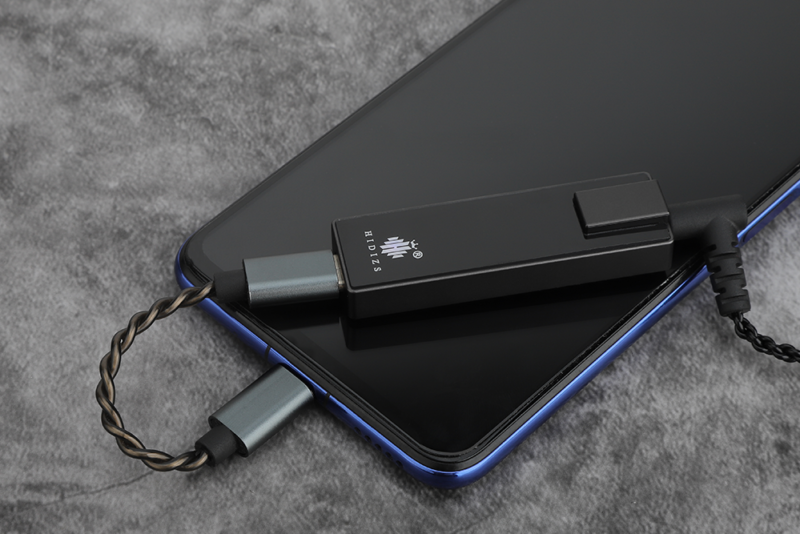TL;DR
The Hidizs S9 PRO USB Dac/Amp Combo is well-built and has everything you need to turn your smartphone into a Hi-Res digital audio player. The sound is clean and crisp, plus it has the power to drive most of the headphones out there. The only thing to watch out for is a little bit of hardness in the Treble.
Intro
Picking out a Dac/Amp Combo amongst the sea of products on the market is no easy task. You look at all of them and think, what’s the difference? Which one will drive my headphones best? How do they sound compared to one another?

I know some people say they all sound the same, talking zeros and ones and all that, but that couldn’t be further from the truth. If someone tells you that, turn and run, because they haven’t heard enough DACs.
Case in point, the Dac/Amp I’m checking out today, the $120 Hidizs S9 PRO. It has the same Dac chipset as the Shanling UA2 I recently reviewed (and highly recommend), but it has a totally different sound.
With the S9 PRO, successor to their S9 DAC Amp combo, Hidizs promises a powerful balanced dongle with clean, transparent sound for your smartphone…do they deliver? Well, read on for my full impressions!
The Hidizs S9 PRO Mini HiFi DAC sample was sent to us by Hifigo.com in exchange for an honest evaluation; it doesn’t need to be returned after the review. So if you like what you read about the S9, click over to their Amazon listing! Thanks to them for the opportunity!
Specs
| Single-Ended Headphone Output | Rated Output Power | L&R 100mW@32Ω |
| Frequency Response | 20-50kHz | |
| Signal-to-Noise Ratio (SNR) | 120dB (@32Ω) | |
| Channel Separation | 80dB (@32Ω) | |
| Total Harmonic Distortion+Noise | 0.0012% (@32Ω) | |
| Balanced Headphone Output | Rated Output Power | L&R 200mW@32Ω |
| Frequency Response | 20-50kHz | |
| Signal-to-Noise Ratio (SNR) | 119dB (@32Ω) | |
| Channel Separation | 118dB (@32Ω) | |
| Total Harmonic Distortion+Noise | 0.0006% (@32Ω) |
| Recommended Headphone Impedance Range | 8-300Ω |
| Metal & Color | Black, Silver |
| What’s in the box | Type-C to Type-C×1 Type-C to USB-A adapter×1 Rear clip×1 User manual×1 Warranty card×1 |
Build/Features
The Hidizs S9 PRO is a sleek USB Dongle DAC with a CNC milled aluminum frame and polycarbonate panels. It has the same footprint as a stick of gum, and it’s only about three times thicker. By the way, there’s a slight protrusion near the top for a detachable pocket clip (included in the box).
It looks good, but I did find that the finish on my black review unit quickly rubbed off in small spots near the corners, and the poly panels creaked if I squeezed too hard.
Like the $85 Shanling UA2 DAC Amp Combo (to which I gave a near-perfect rating), the S9 has both single-ended (3.5mm) and balanced (2.5mm) headphone outputs, plus a USB-C connector that supports detachable cables.

Detachable cables mean you can choose between a USB-C to USB-C cable (included) for Android devices or a USB-C to Lightning cable (purchased separately) for iPhones.
This is a good thing for Apple folks because it means they don’t have to deal with Apple’s PIA Lightning to USB Camera Adapter. That means less crap hanging from your phone.
Also, like the UA2, the S9 has some impressive power specs, with 200mW coming from the Balanced connection, and 100mW coming from the Single-Ended jack (32 ohms).
That puts it in the top quarter of DAC/Amp combos when it comes to output power, and it also means you can drive most headphones with it, including some of the more inefficient models. For example, it could drive the big ol’ Gold Planar GL2000’s I had on my desk with no problem.

Unfortunately, this means it’s probably not a good match for some of the more sensitive IEMs and headphones out there, especially since it doesn’t have any way to control gain. The UA2 mentioned previously has a companion app that reduces the gain, which adds flexibility.
Inside the S9 PRO, there’s an ESS9038Q2M DAC chip that does PCM up to 32bit/768kHz, and DSD up to 512, but no MQA. Correspondingly, a logo indicator light on the outside panel shows the sample rate and file type employing six different colors:
- Yellow: DSD64/128
- Purple: DSD256/512
- Blue: PCM176.4/192(Khz)
- Red: PCM 352.8/384(Khz)
- White: PCM 705.6/768(Khz)
- Green: PCM 44.1/48/88.2/96(Khz)
As far as device compatibility is concerned, the S9 Pro works with Windows, Android, Mac OS, iOS (iPhone), and iPad OS Systems.

For Apple devices with a Lightning port, you will need either the optional Hidizs LT02 USB-C to Lightning Cable ($24) that plugs directly into the DAC or the Apple Lightning to USB Camera Adapter ($29) that works in conjunction with the included USB-C cable.
As I said earlier, the LT02 cable plugged directly into the S9 PRO is the best/easiest/cleanest option.
Listening To The Hidizs S9 PRO USB Dac/Amp Combo
For my sound tests, I plugged the Hidizs S9 PRO into the USB port of my Samsung Galaxy S21 Ultra 5G and pulled up the Qobuz app for some Hi-Res music.
As far as headphones were concerned, I mainly used the $350 Hifiman Sundara, which I consider to be the best headphone under $500.
From the beginning with the Sundara, I picked up a very lively sound from the S9 PRO with a definite forward perspective. It sounded like you were in the front row of an intimate Jazz club.
I credited this to a somewhat aggressive tuning in the upper mids, which did provide a considerable amount of presence to the S9 PRO’s performance.

But that tuning also manifested as a peakiness in the overall tonal balance. I usually prefer a more laid-back perspective, where you have an opportunity to hear “into” the music as it comes forward.
Speaking of tonal balance, the S9 PRO also seemed to have a lift in the upper bass, which added weight and a bit of boominess at times. The central part of the midrange was slightly recessed in the mix, but it was still clear, and vocals came across nicely. The Treble also seemed to be elevated at the very top, providing some air and definition.
The S9 PRO had excellent detail reproducing the timbre of instruments well, but micro-detail could’ve been better as the trailing ends of notes seemed ever-so-slightly truncated.
The Dynamics were good, especially for a DAC priced around a hundred bucks. I like how it handled both quiet and loud passages, with the soft passages emerging fully from the black background and loud passages exploding forward when needed.
As far as Soundstage and Imaging were concerned, the S9 Pro did a good job of spreading the performance out seamlessly in front of you and separating the elements of the mix.

The imaging and focus were really good for a DAC at this price point; I just wish there was a little more layering and depth. But, that said, as a general rule, you don’t get a lot of that at this price point. So you would probably have to pay around $200 to get a DAC that would be significantly better in that area.
Switching the Sundara over to the Balanced output, I found that other than the apparent power boost, there was also a tiny amount of improvement in the separation and detail, but not enough to make the jump if you have enough power on the single-ended side.
I also tried the S9 PRO with the Focal Elear to see how it sounded with a Dynamic headphone, and I thought it sounded better in some aspects than the Sundara did.
The dynamic driver didn’t seem to play up the excess in the upper mid tuning as much as the planar headphone did, so it sounded more natural to me. On the other hand, the Elear didn’t quite have the separation and clarity the Planar headphone did, so there’s that. But that’s kind of what you get when you compare planar and dynamic headphones.
Hidizs S9 PRO Vs. Shanling UA2
Since the Shanling UA2 has basically the same specs and DAC chip as the S9 PRO, I thought a comparison was in order. Out of the box, the UA2 has a more mid-centric, laid-back sound, with a roll-off at the top and a slight lift on the low end.
Therefore, the UA2 has less air and macro detail than the S9 PRO, and the bass is not as pronounced. However, because of the laid-back perspective, you’re able to hear more “into” the recording, and you will pick up some micro-details that will be harder to hear on the S9 PRO.
Reflections of the recording space and the trailing edges of notes are more prominent on the UA2, making it sound more natural to me. It also has more depth because of this.

That said, the S9 PRO has more sparkle, openness, and upfront treble detail than the UA2, so if you like that, it will probably be the DAC/Amp for you. It also has a wider soundstage.
Personally, despite the lack of air and upfront detail, I found the UA2 easier to listen to over extended periods, so its sound appealed more to me overall.
Also, keep in mind that the UA2 works in tandem with Shanling’s Eddict player app, where you can select different digital filters and tweak the sound if you like. Again, this is something you can’t do on the S9 PRO.
The Wrap Up
So with the $120 Hidizs S9 PRO DAC Amp Combo, Hidizs promised a commanding balanced dongle DAC with clean, transparent sound for your smartphone, and that’s pretty much what you get. It’s quite clean and transparent for the price point, and its power output puts it in the robust category.
The only issue I have is a little bit of peakiness in the Upper Mids/Treble, which can become a little distracting with certain pieces of music. It may also become fatiguing over time if you’re sensitive to that kind of thing.
However, the boost in that part of the audioband does provide presence and airiness the competition doesn’t have. So if you like a little extra sparkle on the top end combined with decent technicality overall, you should check out the S9 PRO. It will definitely be an improvement to the built-in DAC on your smartphone.
Hifitrends is reader-supported. When you purchase through links on our site, we may earn an affiliate commission. Prices are subject to change at any time.

I’m an audio writer who started as a young audio salesman/consumer electronics professional back in the late 90s. That’s where I discovered the magic of 2-Channel sound. My hunger for great sound has led me on a delightful music quest that continues today.



Leave a Reply